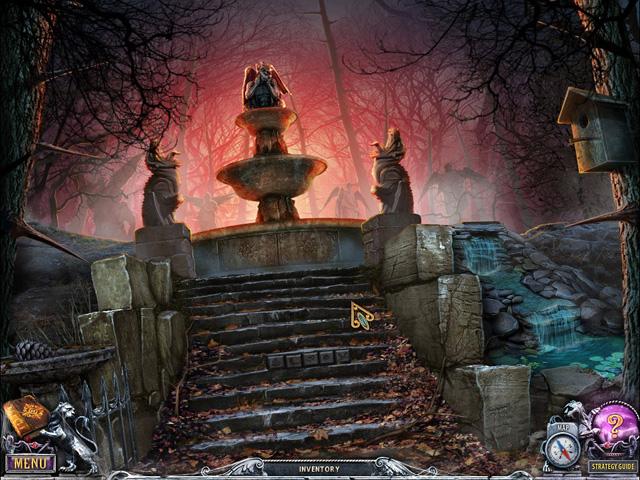- Wondering how to get Monopoly GO! free rolls? Well, you’ve come to the right place. In this guide, we provide you with a bunch of tips and tricks to get some free rolls for the hit new mobile game. We’ll …
Best Roblox Horror Games to Play Right Now – Updated Weekly
By Adele Wilson
Our Best Roblox Horror Games guide features the scariest and most creative experiences to play right now on the platform!The BEST Roblox Games of The Week – Games You Need To Play!
By Sho Roberts
Our feature shares our pick for the Best Roblox Games of the week! With our feature, we guarantee you'll find something new to play!All Grades in Type Soul – Each Race Explained
By Adele Wilson
Our All Grades in Type Soul guide lists every grade in the game for all races, including how to increase your grade quickly!
House of 1000 Doors: The Palm of Zoroaster Review
Kate Reed, the prosaically named novelist/heroine of the House of 1000 Doors series, has become a “house hunter.” Not that I blame her, as the Alawar Five-BN team’s latest installment, House of 1000 Doors: The Palm of Zoroaster, is a metaphysical treat for players. The game itself functions like a crystal ball of hidden-object tropes, giving us a glimpse into the past by employing the founding conventions of the genre, yet reminding us of how sophisticated we’ve become by fully realizing those conventions.

The Palm of Zoroaster ensures you’ll be hunting the House of 1000 Doors like so many before you
Kate Reed, the prosaically named novelist/heroine of the House of 1000 Doors series, has become a “house hunter.” Not that I blame her, as the Alawar Five-BN team’s latest installment, House of 1000 Doors: The Palm of Zoroaster, is a metaphysical treat for players. The game itself functions like a crystal ball of hidden-object tropes, giving us a glimpse into the past by employing the founding conventions of the genre, yet reminding us of how sophisticated we’ve become by fully realizing those conventions.
It’s one year after the events of Family Secrets, although you wouldn’t know it by Kate’s appearance (I mean, how many mysteries can a girl solve in the same cocktail dress?) Some suspiciously supernatural-looking lights set the New Jersey skyline ablaze and act as this game’s catalyst. Kate heads out on a nearly empty tank of gas <insert boring tutorial level here> to find where this supernatural house has materialized and visit the Lancasters, the quirky family of mediums who live there. The real gameplay begins when, you guessed it, Kate crashes her car into a tree.

Now, you might be concerned that the developers milked the title and merely reskinned the first game or recycled scenes. I’m happy to report that that isn’t the case. It appears a conscious and concerted effort was made to get us out of the proverbial house. I know I breathed a sigh of relief when I clicked the first door and read: “As soon as I even think about a door, it disappears.”
The narrative hinges on the unexpected arrival of a supernatural organ to the House of 1000 Doors. Soon fireballs attack the Lancasters and their residence, and they stem from the Palm of Zoroaster. Only a song played on the organ made from Jericho pipes will destroy this demon-infused fire gem, and we are tasked with traveling around the world (Tibet, India, Jerusalem, and Madagascar) and through time via portrait portals to collect the magical skulls that activate the organ. The final and ultimate objective is to find the Palm of Zoroaster and place it in the organ.
Each of the four portrait’s in the art gallery are a self-contained story that develops the main plotline, and each offers about an hour of gameplay, resulting in a 4+ hour game. The four locations are a visual departure from the dreary and macabre haunted manors to which we’ve grown so accustomed. The scenes are reminiscent of early hidden-object games, in which we traveled to bright, foreign locations. The developers hit all the old-time favorites: the plane crash in the jungle, the haunted pirate ship, the blooming cherry blossom trees, and the howling monkeys.

But The Palm of Zoroaster deserves a place among the top games being developed today. It’s not necessarily innovative, but it’s a master of most mechanics. Production values are high, with beautiful graphics, competent voice-overs, and an intriguing twist on an otherwise conventional storyline. But most of all, this is the traditional hidden-object player’s dream game. It relies heavily on well-crafted hidden-object scenes to supply the player with objects. These scenes are crisp, clear, and very interactive. There’s no misclick penalty, as the items appear on a cycling list which by default prevents a click fest, and many items aren’t visible upon first look: they’re hidden in zoom zones and other items or need to be assembled.
The tight-knit design creates remarkably easy navigation (no awkward perspectives or similar-looking areas), and there’s a fast-travel map to boot. The map shows you where currents tasks are available, and you can click to travel to that location, forgoing the to-ing and fro-ing through the 35+ locations. (A big thank you to the developers for respecting our precious gaming time!) Moreover, the interwoven scenes and multiple-step tasks ensure you’ll return to an area at least twice and replay hidden-object scenes with a slightly different list of items.
Unfortunately, the game’s boon is also its bane. As the genre progresses from scouring scenes for objects to acquiring them through solving puzzles, the gameplay really does feel like a throwback, albeit a much more interactive and mobile one. Essentially, the hidden-object scenes ARE the puzzles on this adventure. I played for over 15 minutes before I encountered the first puzzle, and that one and the few-and-far between to follow were all recycled from the early days: matching pairs, lining up rings to create an image, repeating a sequence of lights, etc. What’s painful for a puzzle-adventure fan is not just the lack of puzzles, but also the replaying of hidden-object scenes.
House of 1000 Doors: The Palm of Zoroaster is more than worth the play. This fast-paced, well-balanced game shines the light on our casual gaming past and gives us much to hope for in future games by Alawar Five-BN. The Nordic-inspired bonus chapter is a lengthy adventure in its own right, where we finally learn something about the enigmatic Gabriel. The Palm of Zoroaster reveals Kate was not the first “house hunter,” and I’m quite certain she will not be the last.

The good

The bad
More articles...
Monopoly GO! Free Rolls – Links For Free Dice
By Glen Fox
Wondering how to get Monopoly GO! free rolls? Well, you’ve come to the right place. In this guide, we provide you with a bunch of tips and tricks to get some free rolls for the hit new mobile game. We’ll …Best Roblox Horror Games to Play Right Now – Updated Weekly
By Adele Wilson
Our Best Roblox Horror Games guide features the scariest and most creative experiences to play right now on the platform!The BEST Roblox Games of The Week – Games You Need To Play!
By Sho Roberts
Our feature shares our pick for the Best Roblox Games of the week! With our feature, we guarantee you'll find something new to play!All Grades in Type Soul – Each Race Explained
By Adele Wilson
Our All Grades in Type Soul guide lists every grade in the game for all races, including how to increase your grade quickly!







